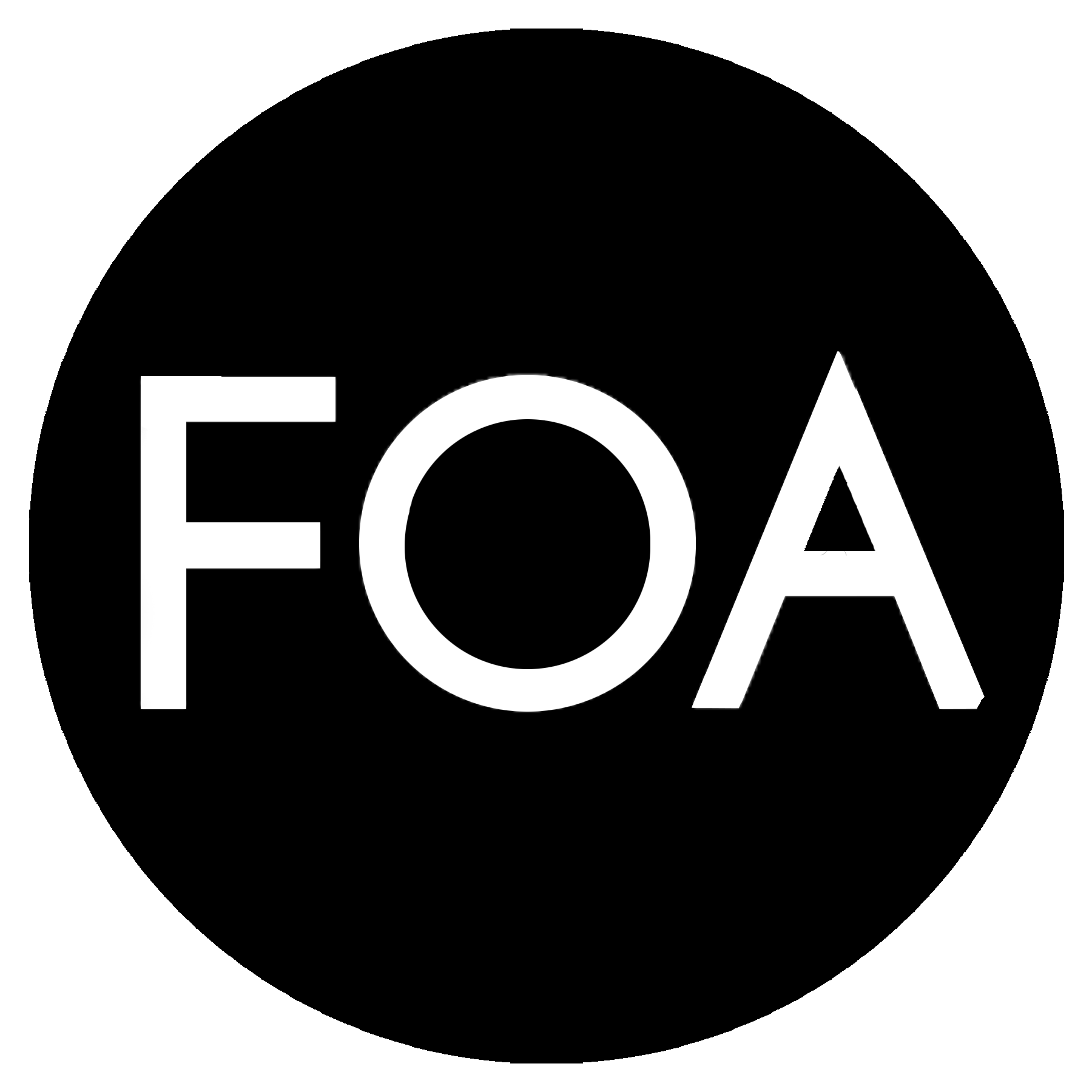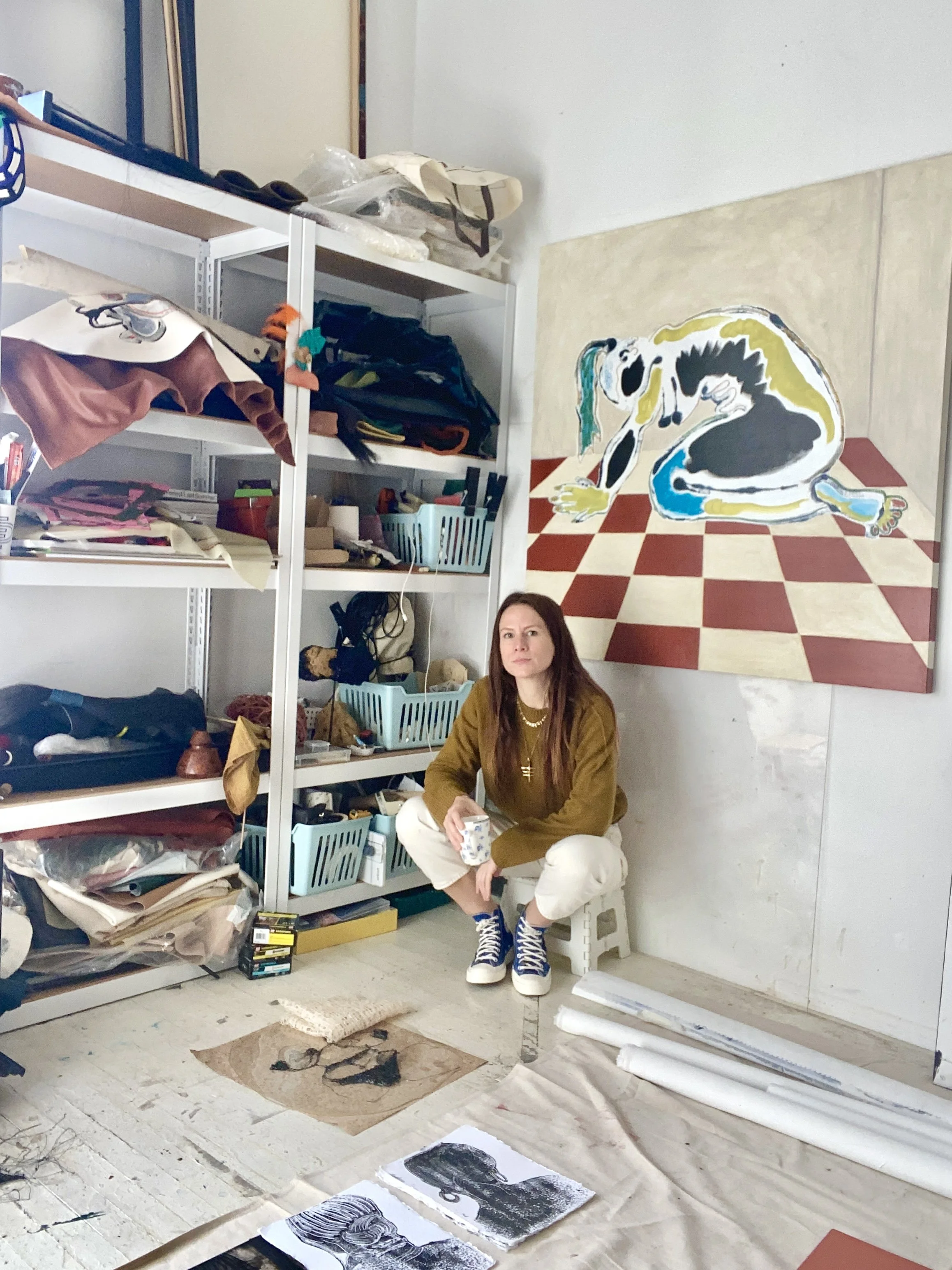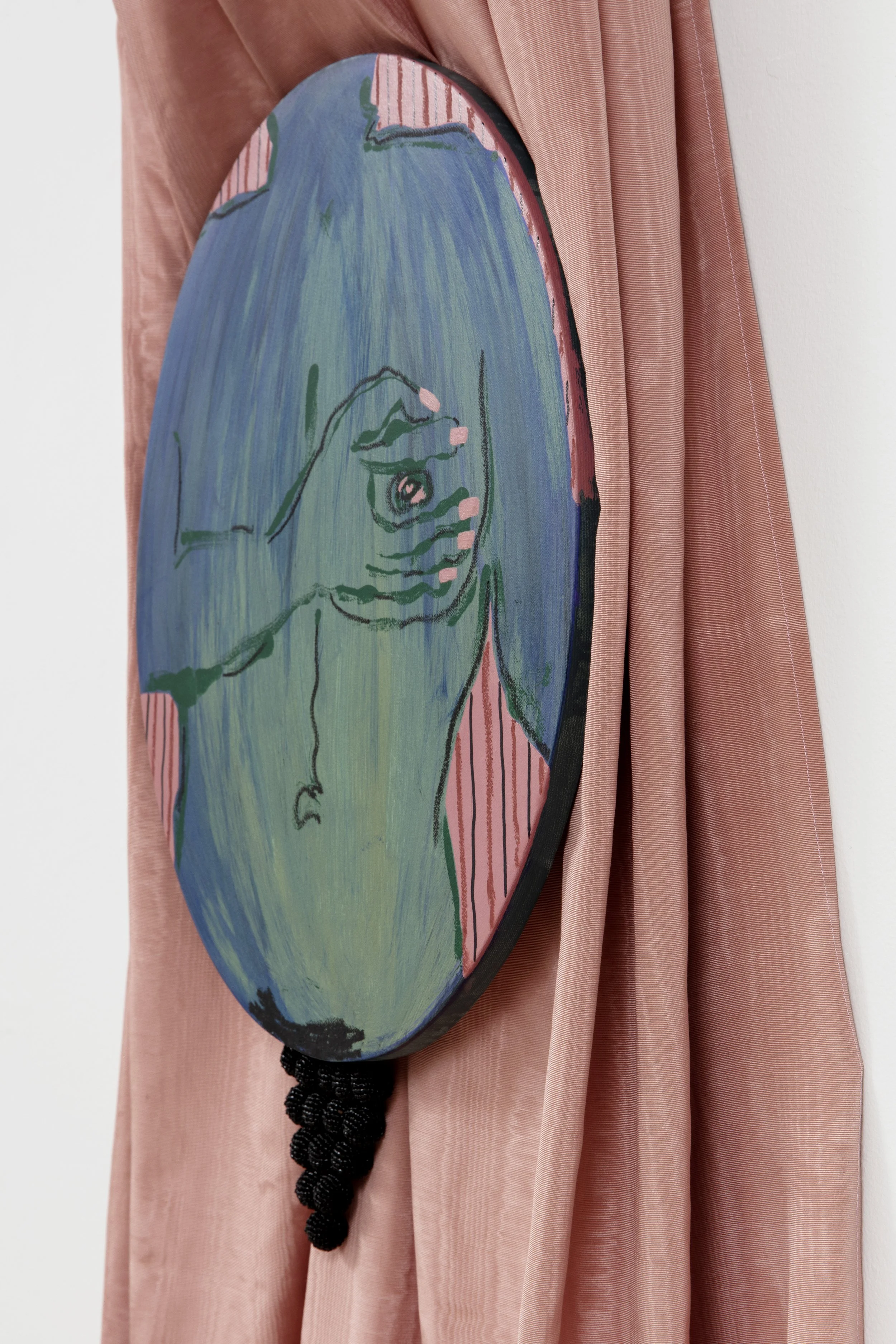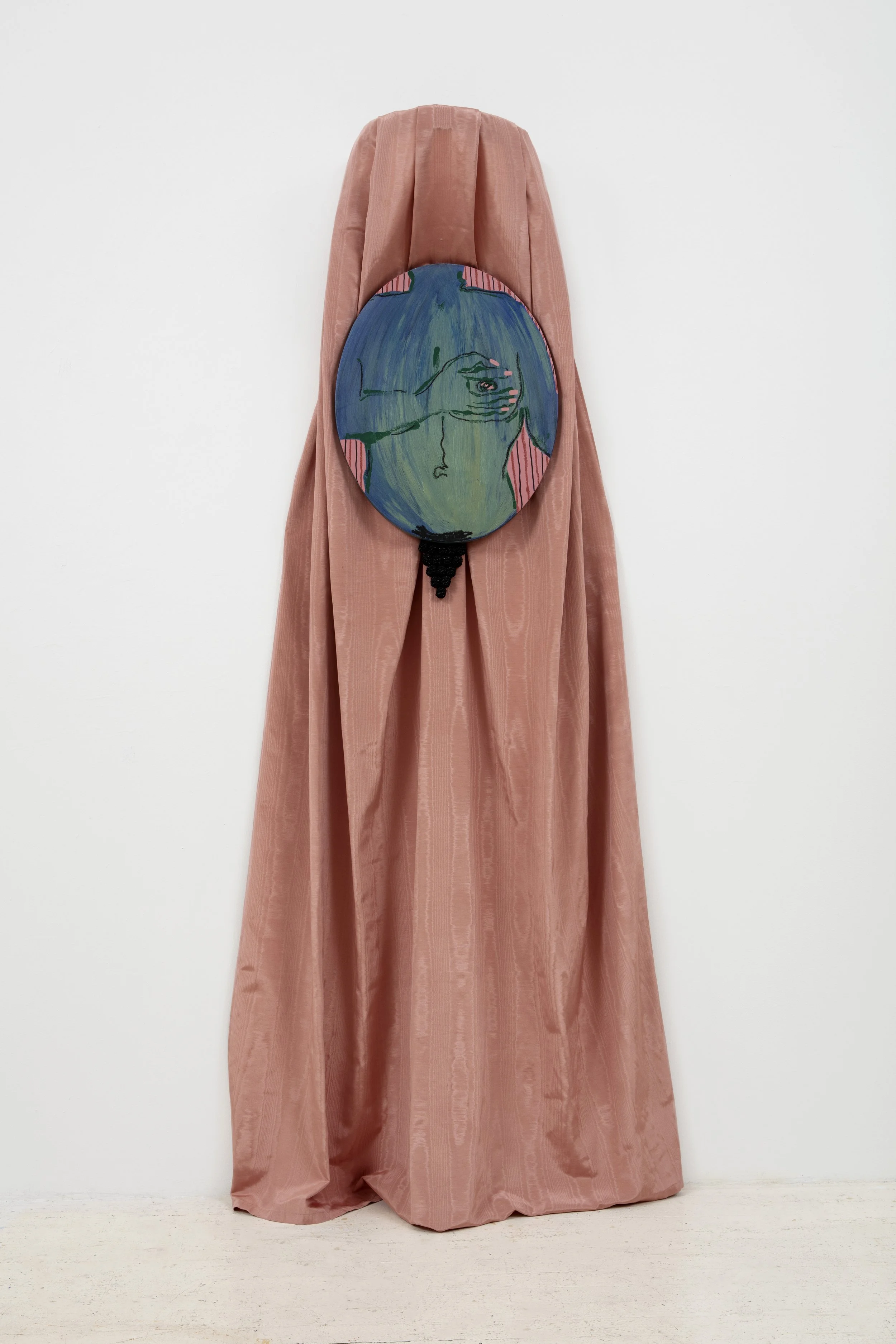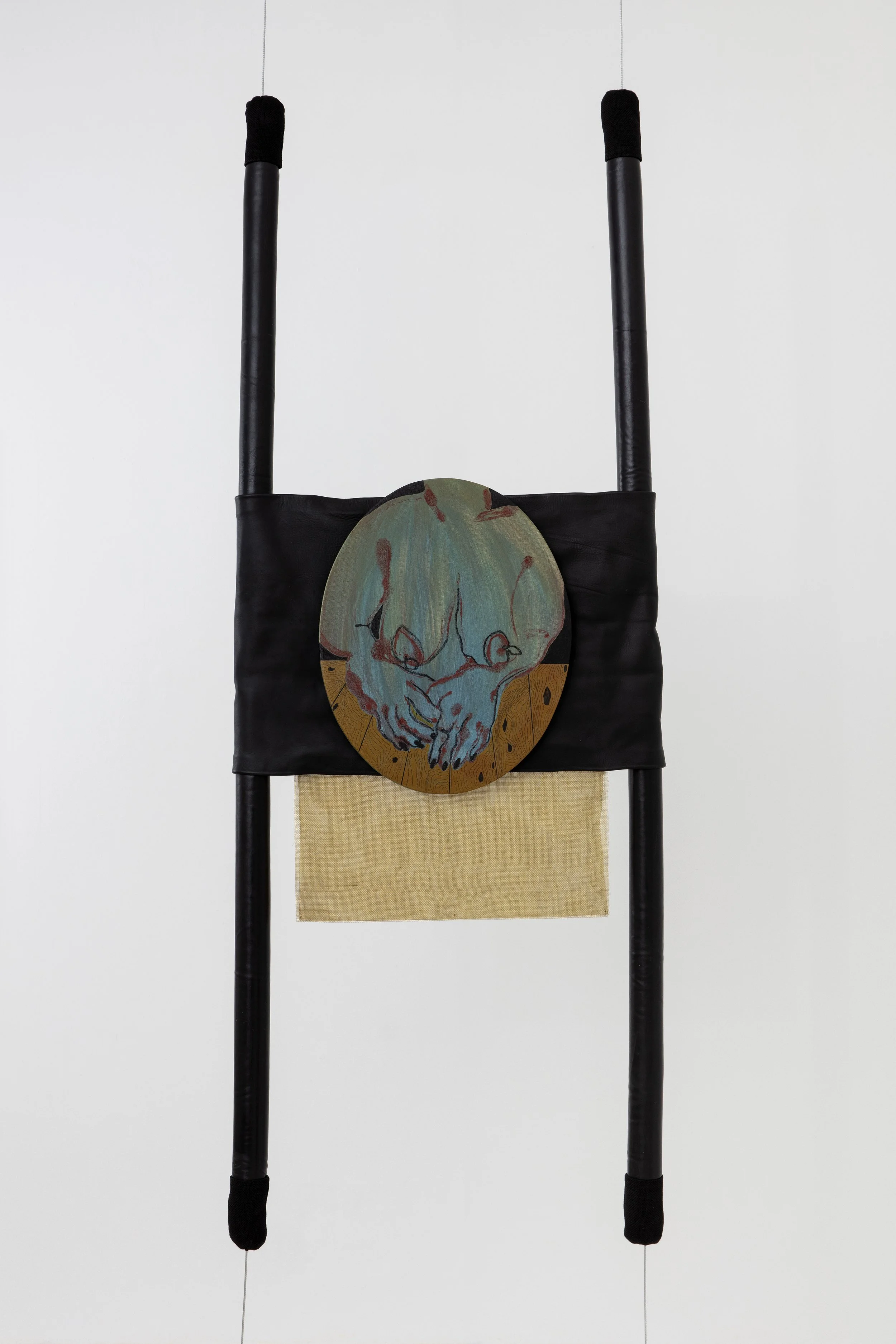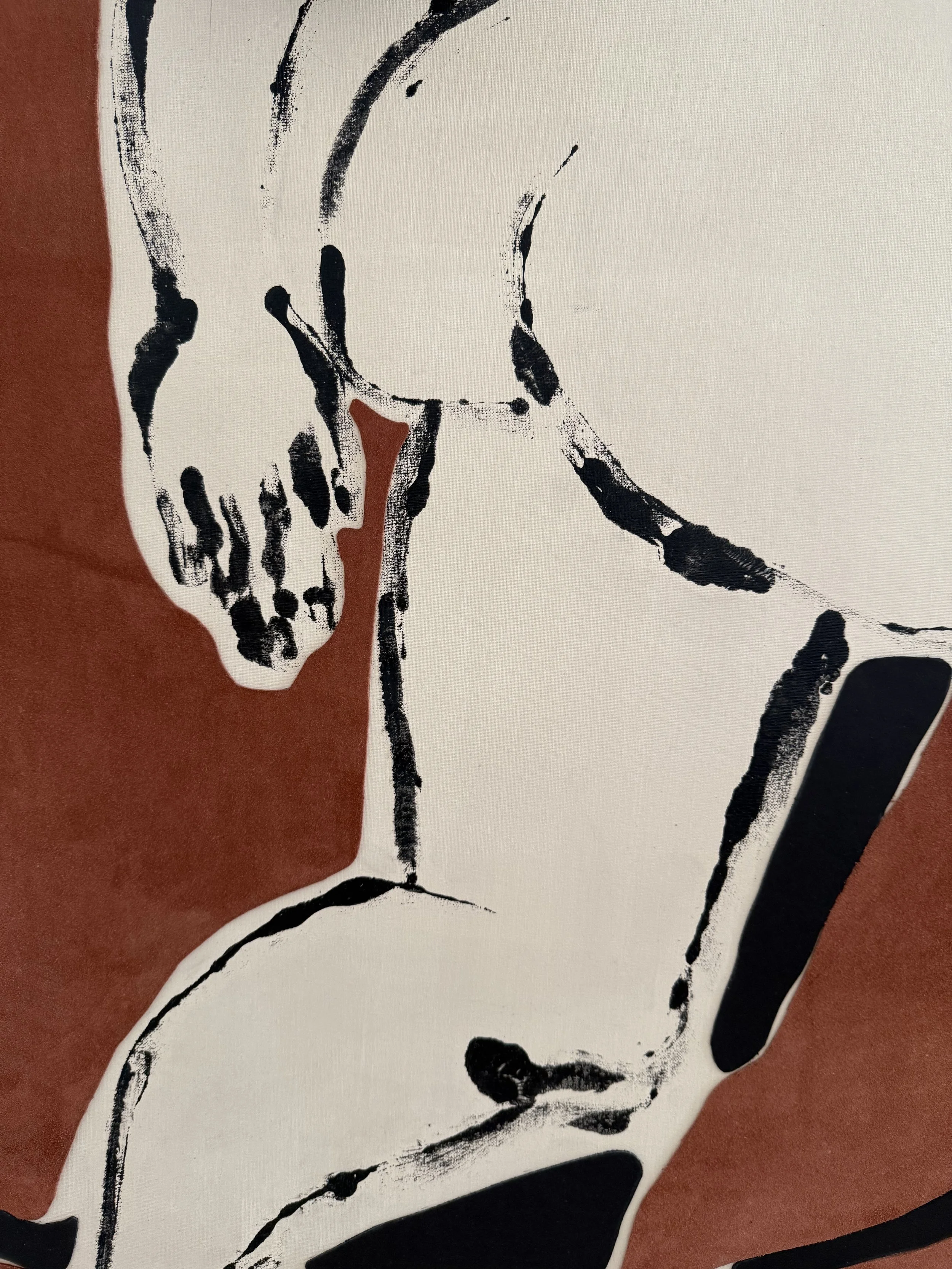Interview with Parme Marin
PARME MARIN
Parme Marin is a Paris-born, New York City-based visual artist whose work spans sculptures and paintings. Marin’s studio practice is grounded in an exploration of materiality and identity. She interrogates the meaning of motherhood, bodily autonomy, domesticity, and femininity through complex multimedia artworks, printmaking, figurative drawing, and painting resulting in a distinctive visual language. She honed her studio practice through extensive study of figure drawing and printmaking at the Art Students League of New York.
Marin’s solo exhibitions include In the Name of the Mother (New York, NY 2024), Spring Break Art Show (New York, NY 2023), My Tribe at the Four Seasons (Marrakech, Morocco 2014), and Sur Mes Traces (Park Hyatt, New York, NY 2015). She has exhibited in numerous group shows including MVVO Art at The Oculus (New York, NY 2022), InstaSelect V.2 at Mark Borghi (Sag Harbor, NY 2022), Male Nude: Turning the Gaze at Equity Gallery (New York, NY 2022), Paroxysm at Westbeth Gallery (New York, NY 2023), and The Collective at The Highline Nine Galleries (New York, NY 2023).
Marin’s work is featured in “Call Your Mom” that is currently view until May 22nd at KidSuper Gallery, Brooklyn, NY
INTERVIEW WITH PARME MARIN BY LAURA DAY WEBB
Your work explores powerful themes like motherhood, femininity, and bodily autonomy through a multidisciplinary lens. How do you approach translating such personal and complex subjects into visual form?
To be honest, the different themes in my work tend to emerge naturally, often as I navigate personal life experiences. What I feel deeply within becomes an urge—almost a necessity—to express it. It’s cathartic. I honestly don’t know how else I could release those emotions. Of course, I have long, meaningful conversations with friends, but my work is something else entirely—it embodies me. It holds my thoughts, my emotions, everything I am, everything I’ve grown into, and everything I aspire to become—with its flaws.
I tend to approach each new theme almost like a fashion collection. It’s just how I think. There’s the material, the palette, the concept—and then, of course, instinct. I don’t know any other way to do it.
You’ve had a fascinating journey—from Paris to Marrakech to New York, with a decade in sustainable fashion and design. How has your experience in the fashion world and your time in Morocco shaped your artistic voice and material choices?
We are nothing more than a combination of experiences and connections—everything I’m doing now is rooted in my past. From a young age, I was drawn to fashion and dressing up; at the time, it was the only way I knew to express myself and share my singularity. I’ve always had a deep attraction to materials, which naturally led me to fashion. It felt like the obvious path. I wanted to work with leather, beads, lace, and the ribbons I would find in flea markets and old dry goods shops.
Life eventually took me to Morocco, which only deepened my love for color, geometric patterns, and raw materials. Everything started to make sense—I had a clear vision of what I liked and what I wanted to create. I was raised in a family where creativity was part of daily life: a mother with an artistic spirit and a father passionate about art and collecting. This environment helped shape my eye from an early age.
Those experiences taught me to value craftsmanship and the stories hidden in each material. They continue to shape my artistic voice today—whether I’m choosing a medium or composing a piece, I’m always seeking that balance between form, texture, and meaning rooted in cultural and personal narratives.
Your practice draws heavily on materiality—leather, bone, wood, and more. What role does tactility and material storytelling play in your process, and how do you select the elements that become part of your work?
For me, it all begins with matter. Unlike most creatives, I don’t start with sketches—my process is guided by textures. They are my starting point, the initial spark. I get impulses when I discover or encounter new materials; they trigger ideas and naturally lead me to the next step.
At the same time, I have a compulsive relationship with certain materiality—I return to them again and again. Leather, horsehair, ropes… they’ve been part of my work for years and will continue to be. Yet I’m also driven by curiosity and a constant need for challenge. That’s why each new body of work introduces a fresh element—whether it’s an unfamiliar fabric, a complex form, or an unexpected material
Having studied at The Art Students League of New York, particularly focusing on figure drawing and printmaking, how do those classical foundations influence your contemporary practice?
To be honest, I’ve never quite fit into traditional academic structures. I tend to feel uncomfortable in imposed group settings. I’ve always been an autodidact, but I also understood early on that I needed to save time by learning certain fundamentals more quickly than I could on my own. I really started with no technical skills, and I knew taking figure drawing classes would help me grasp the basics, but what really made a difference was repetition.
My goal was never to become an exceptional draftsman—it was to develop enough technique to express my intentions and emotions clearly. I don’t even remember exactly why I chose to take printmaking classes, but I instinctively knew that combining both practices would lead to something meaningful. It wasn’t a strategic decision; it just felt right.
For me, everything in life comes down to balance—finding the right equilibrium between all elements.
Your recent solo exhibition, In the Name of the Mother, was deeply rooted in themes of domesticity and identity. Can you walk us through the emotional or conceptual origins of that body of work?
This body of work has been deeply meaningful to me, both personally and in terms of my practice. My work has always been introspective and personal. I became a mother seven years ago, and then again five years ago—and it completely turned my life upside down. It was a pivotal moment that led me to change careers. As a new mom and a new artist, I felt the urgent need to find a balance that could support both roles.
At the same time, I felt a strong impulse to speak out against the injustices I was experiencing. There are so many subtle (and not-so-subtle) ways in which the burden of childcare still disproportionately falls on women. I couldn’t—and still can’t—stand it. I’m a very honest, straightforward person, sometimes even binary in my thinking, and this imbalance was simply not something I could ignore. I often found myself thinking, or even hearing my children say: “It’s not fair!”—and that’s exactly how I felt. I needed to address it through my work.
Creatively, this was also a transformative period. I had been struggling to find a way to merge my 2D and 3D practices, and nothing seemed to click. But then I started incorporating fabric, beads, and other materials I had used in my earlier work with jewelry and accessories—and something shifted. It felt like I was tapping into familiar techniques to ease myself into a new process.
Using fabric and domestic materials became a way to express the feeling of being trapped in the roles of motherhood and household caretaker. It gave form to something I had felt so intensely but hadn’t yet been able to articulate
Many of your works interrogate the relationship between the body and its environment. What does the body represent to you as both a formal and symbolic subject in your art?
There’s so much to say on this subject, and I know I still have a lot to explore. I keep finding that every new project I start somehow circles back to the body. It’s endlessly fascinating to me—always has been—and especially now, in this new era where the codes around bodies have shifted so much yet seem more present and scrutinized than ever. How could I possibly step away from it?
When you speak with women of my generation or older, you quickly realize how many of us have a complicated relationship with our bodies—with weight, with appearance, with expectations. There’s a growing movement toward self-acceptance, toward freeing ourselves from these pressures, but the reality is still so binary, even today.
Our bodies are tied to our cultures and the way we were raised. They carry stories—through shape, through marks, through posture. They form the first impression we give to the world, the way we choose (or don’t choose) to be perceived. It reveals so much about who we are.
FEATURED WORK
CURRENT EXHIBITION
